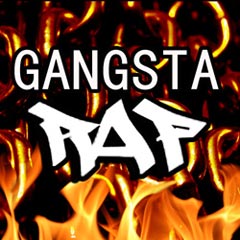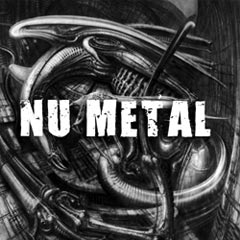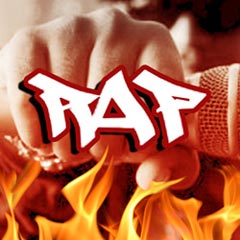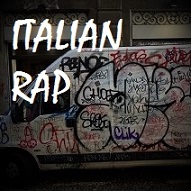Rap
ON AIR - PROGRAMMING
Rivers of Spoken Word: The Story of Rap Music
Rap music has come a long way since its humble beginnings in the lower economic cities around America. Its rise and global reach have connected multiple industries, ranging from fashion, movies, to sports. Combining spoken word poetry with modern beats, rap music is now a beloved genre for many, making it the backbone of the hip-hop subculture. In this blog post, we'll dive deeper into the story of rap music, exploring its most significant artists, defining moments and lasting legacies.
The roots of rap music can be traced back to the African American and Latino communities in the United States. It was these communities that first experimented with combining poetry and rhyme with popular beats. The earliest rappers used simple rhymes and catchy hooks to convey their messages of struggle, resistance, and hope. Artists such as Grandmaster Flash, Kurtis Blow, and Run-DMC were among the first to bring rap to the masses.
With the commercial success of acts such as LL Cool J and Beastie Boys in the '80s, rap music became a mainstream genre. It was during this time that rap music's lyrical power and influence started to emerge. Artists such as Tupac Shakur, Notorious B.I.G, and Jay-Z became some of the most iconic figures in rap music. Through their music, they tackled issues such as crime, poverty, and racism, giving voice to the oppressed.
In the 2000s, rap music continued to evolve, with artists such as Kanye West, Eminem, and Drake pushing the boundaries of the genre. These artists used their music to explore their personal struggles, reflecting the complexities of modern life. With the advent of social media, rap music became more accessible than ever before, with new artists being discovered and promoted online.
Today, rap music has firmly secured its place as a global phenomenon, influencing popular culture around the world. From fashion to movies, sports to politics, rap has shaped the way we think and see the world. Its power lies in its ability to unite people from all walks of life, creating a sense of community and shared experience.
The story of rap music is a story of creativity, struggle, and triumph. Its roots may have been humble, but its impact on popular culture has been enormous. Through its powerful beats and poetic lyrics, rap music has given voice to the oppressed, challenged our assumptions, and brought us together as a community. As we move forward, it's certain that rap music will continue to evolve, inspiring new artists and pushing the boundaries of what we think is possible in music. So next time you hear a rap song, take a moment to appreciate the artistry and passion that went into its creation. Who knows, you may just discover a new favorite artist or song, and join the millions of fans who have been moved by the rivers of spoken word.
Want to listen to the latest rap songs? Look no further – we've got the biggest, newest tracks all in one place.
New rap songs | Listen to the latest hits here
#skeptacore Pt.3
Transparency Ft. Usher
Snakes Of The World Today
Let Me Ride (feat. Jewell & Snoop Dogg)
Deep Cover (feat. Snoop Dogg)
Rap scene, features and brief history
Towards the end of the ‘70s, musicians like DJ Kool Herc and Afrika Bambaataastarted started to entertain street parties with their sampling of funk, reggae, jazz, R&B and disco music songs. As the popularity of this genre grew, the MCs started to sing over the sampled music with their skillfully crafted rhymes to attract people to the party. They usually invited people to dance, or told short anecdotes, an art soon to be known as rapping.
The discographic boost first came with the Sugarhill Gang’s first album in 1979, an event that contributed to the diffusion of this relatively new genre throughout NY’s cultural scene during the next ten years. Then, in 1985, the Golden Age of rap began. Run-DMC became the first mainstream band with their essential style, added with powerful guitar riffs. The genre rapidly developed, drawing on its roots, singing explicit lyrics of violence and social denounce.
In 1986, the first white rap group reached the top: the Beastie Boys. Coming from a hardcore punk background, the band published Licensed to ill, demonstrating that rap music had become a universal language. At the beginning of the ‘90s, the rap scene was all gold chains and showing off. The Public Enemy gave a healthy shock to the genre wearing alarm clocks around the neck and writing about Malcom X, Islam and politics. The violent social reaction brought by this period’s lyrics was followed by a quieter moment when old gangsters became peace supporters. The teachings of these rappers were not fully understood, at least among the artists. In the ‘90s the famous West Coast - East Coast rivalry brought to the death of Tupac Shakur e The Notorious B.I.G., respectively in 1996 and 1997.
In recent years rap has been represented by important artists as Dr. Dre, Snoop Dogg, Eminem, 50 Cent, Busta Rhymes and many others, who sold million copies worldwide. Many of them are major label superstars, but still many minor recording studios are thriving in the genre’s underground, proving how this music is deeply rooted in US’s soul.
Battle Rap
There are different types of battles in battle rap. One most flourishing is freestyle battle. In freestyle battle two or more rappers appear on the ground to compete each other using extemporized content. Each one of them use clever and Innovative language to impress his audience and to defeat his opponent.
Master of ceremonies gained popularity and fame through live battles. Freestyle battle can occur at any place whether it is a street, concert or a stage at school. Hollow Da Don is using the elements of free style in his rapping but he prepares the content before the contest to impress and appeal his audience and to defeat his opponent.
cypher is a term related to rap battle and can be used interchangeably with collection or crowd, get together of rappers, beatboxers and breakers. In which they perform in a circle and surrounded by crowd of spectators and audience. Hip hop too gained success and fame on the basis of street battles.
There are many leagues working under the name of rap lyrics. Their names are king of the Dot, Grind time Now and Don't flop.
Until now many Rap Battle albums has been released internationally. Two of them are CommanderKrim and Mannimarco battle and Ultimate Nerdcore Rap Battle. Shelltoe is a hip hop artist participated in many live Rap Battles. Nice Peter and Epic Lloyd are two rappers working under the title of Epic Rap Battles of History. They have created YouTube channel where they copy and portray other characters such as Napoleon, Albert Einstein and Easter Bunny. Critical is a name used alternatively for many individual artists such as Estonia, Portlandia Electronic, A Canadian Nu Metal band and Swedish boy. They released their works under the title of Critical. Others popular rape artists are Libsey, A2daZ, Gestapo sportsverein, The awesome travelling band and Sidjay. In short, Rap battle is the open challenge and contest between rappers. It sometimes involve humiliating and clever language by rappers to defeat their opponents.
Songs as a form of social redemption. We talk with Mico Argirò
This effect is amplified considering that it can reach a large number of people.
We talk about it with Mico Argirò, questions and answers for a comparison between those who listen to music and those who create music.
We know that music brings people together and strengthens a sense of unity. As has been repeatedly in the past, even today it happens that some songs are used to convey messages with strong social content, to claim rights and oppose oppression (are unfortunately current situations of conflict and repression where forms of resistance are identified with songs that become the symbol), why music helps to feel stronger?
It is a very ancient thing, it comes from the rites of the first populations, tarantism and many forms of primordial and popular religiosity. Music has three fundamental components that channel our life: rhythm, harmony and melody. In the rhythm there is everything that starts from the drums of the rituals of passage up to the low of the discos. In harmony there is color, interpretation of emotions. In melody there is feeling and there is, very often, the text. These three simple (and absolutely complex) elements underlie how, of course, music vehicles our emotions and feelings, instinct and reasoning. The music loads us, that we are at the oars of a Viking ship or in a stadium, consoles us when we are sad, it wraps us when we are well.
Apart from the fact that there are no absolute rules always valid for each one, are there any general characteristics that make a song a mass identification tool?
It depends very much on the relationship that is created between the song and the social group, in how that song translates into music and words the feelings, the thoughts, the lives of the people of that social group. And it depends on the genre, the artist and what is considered sincere, the situations, the social group... I do not think there is a recipe, it is more a conjuncture of all these elements. When a large but united group of people says "This song is about me". To cite Kant improperly is "the agreement between the object and the subject", only here the subject is a group of people.
Not always the messages transmitted have positive value, I think of the new generations of rappers who in Milan have become the inspiration and glue of gangs that clash in an often violent way. How do you assess this phenomenon?
Guys today have a pent-up rage that I totally understand, even I have it deep down. Left completely alone, without families, without school, without real groups, sometimes without anyone at all, between lockdown, adolescence, social, find in some types of music expression to these solitudes, even the natural frustrations of youth, to the sufferings of life. And the adults don’t understand , because they never understood, they didn’t understand when it was it happed with rock, they won’t understand now. I do not condone violence, but I understand it and understand how some genders can become catalysts of this catharsis.
In your opinion, how spontaneous are these movements and how subject are they to some form of exploitation?
I believe that some movements are completely spontaneous, others are driven for purely commercial purposes. In each of the two cases always then comes the capitalism that sniffs the opportunity. A group of people who recognize themselves in the same ideals and in the same music also dresses in the same way, have the same idols, watch the same movies: they are a niche market to sell to. So the magic of catharsis is lost in merchandising, in consumption. It fades the sense, dilutes the meaning, in favor, as always, of money.
Today we close here not to dwell too much but with the intention of returning to talk about this and other topics in a forthcoming appointment.
What are you thinking about?







